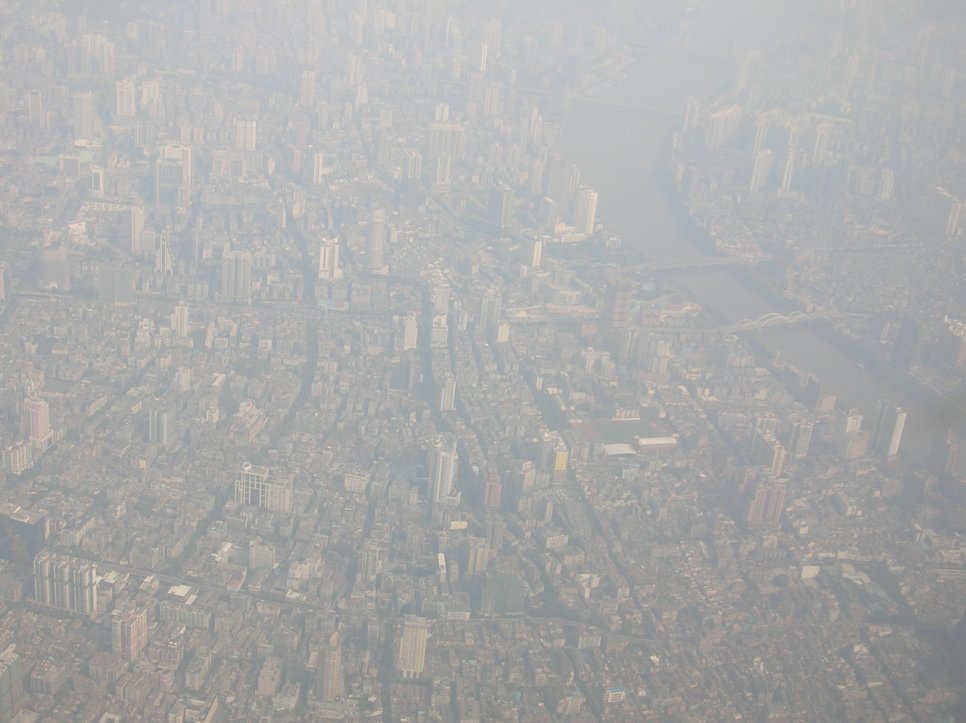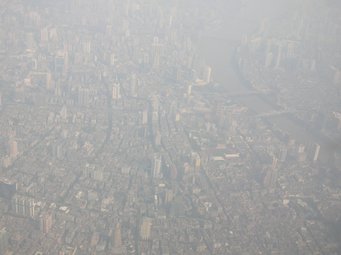Multiphase buffering by ammonia explains wide range of atmospheric aerosol acidity
Anthropogenic ammonia emissions and the water content matter more than dry particle composition for the acidity of atmospheric aerosols in populated regions

Aerosols are tiny solid or liquid particles suspended in the air. They influence the climate by absorbing or scattering sunlight and serving as cloud condensation nuclei. Moreover, they can impact human well-being through adverse health effects of fine particulate matter.
A large fraction of particulate matter consists of nitrate, sulfate, and ammonium ions. The formation of these major aerosol components is strongly influenced by aerosol acidity, which varies widely between different regions with aerosol pH values ranging from ~1 to ~6. The drivers of these large variations, however, are not clear.
Researchers have now discovered how important the water content and total mass concentration of aerosol particles are for their acidity. A team led by Yafang Cheng and Hang Su from the Max Planck Institute for Chemistry discovered that these factors can be even more important than the dry particle composition. For populated continental areas with high anthropogenic emissions of ammonia from agriculture, traffic, and industry, they found that aerosol pH can be efficiently buffered and stabilized at different levels by the conjugate acid-base pair of ammonium ions and ammonia (NH4+/NH3).
The investigations now published in the interdisciplinary research journal `Science´ started with the question if and how the pH of aerosols is buffered in different continental regions. To address this issue, the scientists from Mainz developed a new theory of multiphase buffering in aerosols, analyzed atmospheric measurement data and performed global model simulations of aerosol composition and acidity.
“It turned out that the acid-base pair NH4+/NH3 is buffering the aerosol pH over most populated continental areas, even though the acidity may vary by multiple pH units”, says Yafang Cheng, Minerva Research Group leader at the Max Planck Institute for Chemistry. “Variations in water content are responsible for 70-80 percent of global variability in aerosol pH in ammonia-buffered regions, which was not previously known and can be explained by our new multiphase buffer theory”, she adds.
In particular, the Max Planck researchers used their model to compare aerosol composition and acidity for two very different geographic regions and conditions. In the southeastern United States during summer, the air is clean, and the few atmospheric aerosol particles contain little water at pH values around ~1, whereas there are typically high aerosol concentrations with high water content at pH values around ~5 over the North China Plain in winter. “We find that these large differences in aerosol pH are primarily due to differences in aerosol loading and water content rather than differences in the nitrate content as assumed in earlier studies,” explains Guangjie Zheng, a postdoc in Yafang Cheng’s group.
“Globally, ~70% of urban areas are in the ammonia-buffered regime”, summarizes Hang Su, scientific group leader in the Multiphase Chemistry Department of the institute. “Thus, the newly discovered multiphase buffer mechanism is important to understand haze formation and aerosol effects on human health and climate in the Anthropocene.”
The results of the team around Cheng and Su not only imply that aerosol pH and atmospheric multiphase chemistry are strongly affected by the pervasive human influence on ammonia emissions and the nitrogen cycle in the Anthropocene. They also improve the understanding how air pollution develops and thus provide an important approach for possible control measures.
